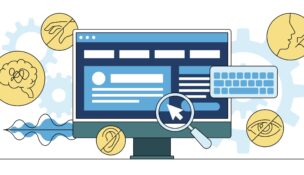

Enriching Employees' Lives
The key to bottom line performance
Colleen Reilly //August 4, 2018//

Wellbeing is a company mission that can and does improve bottom line performance, but only in a small percentage of cases.
Usually wellbeing goals don't work in professional settings because people either don’t understand the necessary multi-dimensional approach, they don’t have time or simply don't care. It is not an easy objective. However, for those who value their people and treat employees like human beings – rather than "human resources" – a culture of wellbeing ensues, one that provides a marketplace advantage, not to mention a powerful cultural transformation.
While wellbeing is a strategic priority for many companies, this has not been the case for the past four decades. In the 1980s and 1990s, large organizations had “health promotion” programs based on education and awareness, narrowly focused on exercise and nutrition. However, time proved that education and awareness does not necessarily lead to real change in behavior.
“We all know what to do to, but we just don’t know why we don’t do it,” was the common mantra.
Nevertheless, these few companies provided programs, resources and tools because they genuinely cared about their employees. Often, they had an onsite doctor and counselors and their program was fully integrated with their safety culture (a lot of manufacturing companies) for sustainability. These companies experienced some positive returns, but it never became mainstream.
In 2000, health promotion morphed into “wellness” and became mainstream, and companies representing all industries jumped on the bandwagon. This was mostly driven by escalating double-digit health-care cost increases. This made sense since we know that 75 to 90 percent of the most common and costly healthcare costs for employers are avoidable, preventable and even reversible through healthy lifestyle choices and habits.
Unfortunately, only the "worried well" (those already healthy and active) signed up and participated. The people who needed the program the most did not engage. After a few years, with no true decrease in health-care costs, a lack of behavior changes and a stagnant 30 percent participation rate, brokers, consultants and employers began to integrate wellness into the healthcare plan design. Employees were rewarded for participating in a program with a health-care premium discount. While participation increased, it proved unsustainable and nothing really changed. Employees were just checking the box to get the money.
Employers were frustrated and the tidal wave of “outcomes-based wellness,” also coined as “wellness or else,” became the approach. This was sure to work and motivate people to change behaviors because if they didn’t get their biometric markers within national guidelines, they would pay more for insurance, or at minimum, do a reasonable alternative (consult with a "coach," for example) to avoid the penalty. It was like car insurance: If you had a higher risk profile, you paid more. On paper that makes sense and some companies even experienced cost savings or flat trends, but again, it was not sustainable, and employees quickly realized how to game the system.
Who likes to be forced to do anything?
And how can employees succeed in changing health behaviors when they go to work and sit all day? Lunch meetings, as we've all seen, can include pizza and soda with an afternoon pick-me-up of cookies and sugary beverages or coffee. Four decades later we are heavier, eat worse, sleep less, are more stressed out, more anxious and burnout is on the rise.
We are unwell.
Good news!
This crisis has enlightened both employers and employees. Employees are demanding a healthy culture where they feel valued, rewarded and recognized, where they have the opportunities for transparent and authentic conversations and where the social norm is a sincere focus on their wellbeing. Wellbeing is more comprehensive and addresses the full human experience of physical, financial, personal, community and spiritual, as well as professional. Forward thinking employers are also responding to this culture as they are desperate to attract and retain top talent. They are focused on the full employee experience and part of that is developing a healthy, happy and thriving culture, which means treating employees like human beings, not human resources.
Colleen Reilly has designed and implemented wellness programs with Fortune 500 companies, including Mayo Clinic, Coors Brewing Company, Boeing, Chipotle, Keurig Green Mountain, Walt Disney Company, Exxon Mobile and Astra Zeneca. She has extensive, hands-on experience in all corporate health and wellbeing arenas, including employee health, productivity, engagement, efficiency and energy management, is a keynote speaker for numerous wellbeing industry events, and has written for World Congress and Harvard Business Review, among other publications






















